Order Artiodactyla Family Balaenopteridae Rank Species | Phylum Chordata Genus Balaenoptera Higher classification Balaenoptera | |
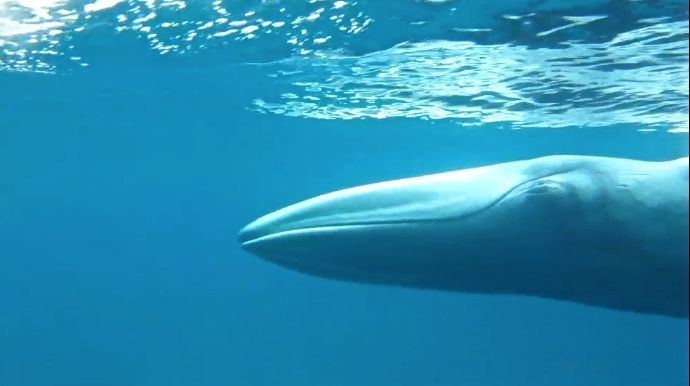 | ||
Similar | ||
This is the first sighting of the mysterious omura s whale
Omura's whale or the dwarf fin whale (Balaenoptera omurai) is a species of rorqual about which very little is known. Before its formal description, it was referred to as a small, "dwarf" or "pygmy" form of Bryde's whale by various sources. The common name and specific epithet commemorate Japanese cetologist Hideo Omura.
Contents
- This is the first sighting of the mysterious omura s whale
- Balaenoptera omurai omura s whale
- Taxonomy
- Holotype and paratypes
- Osteology
- External appearance
- Size
- Mating
- Behavior and diet
- Range
- Sightings
- Artisanal whaling
- Scientific whaling
- Bycatch
- Conservation
- References
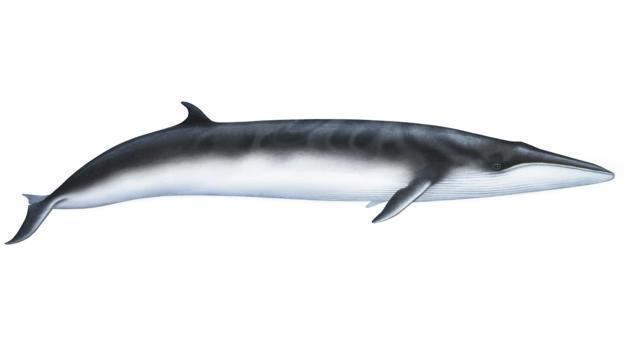
The scientific description of this whale was made in Nature in 2003 by three Japanese scientists. They determined the existence of the species by analysing the morphology and mitochondrial DNA of nine individuals – eight caught by Japanese research vessels in the late 1970s in the Indo-Pacific and an adult female collected in 1998 from Tsunoshima, an island in the Sea of Japan. Later, abundant genetic evidence confirmed Omura's whale as a valid species and revealed it to be an early offshoot from the rorqual lineage, diverging much earlier than Bryde's and sei whales. It is perhaps more closely related to its larger relative, the blue whale.
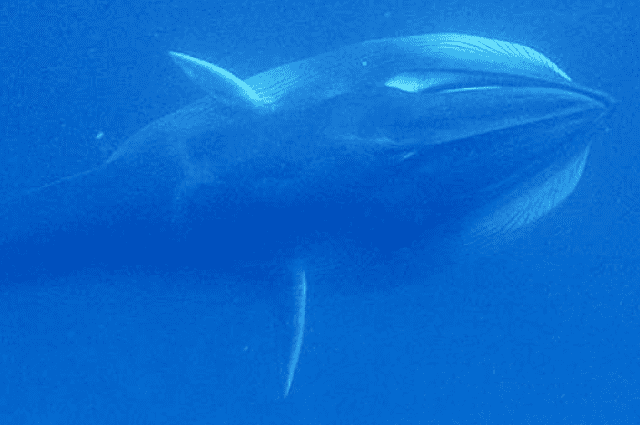
In the third edition of Mammal Species of the World, the "species" is relegated to being a synonym of Balaenoptera edeni. However, the authors note that this is subject to a revision of the genus. The database ITIS lists this as a valid taxon, noting a caveat on the disputed systematics of this species, Balaenoptera edeni and Balaenoptera brydei.

Balaenoptera omurai omura s whale
Taxonomy
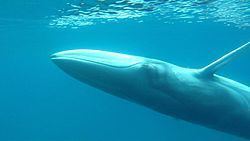
The six specimens obtained in the Solomon Sea in 1976 were only noted to be smaller at sexual maturity than the "ordinary" Bryde's whales caught off New Zealand, whereas the two caught near the Cocos-Keeling Islands in 1978 were not differentiated from the 118 other "ordinary" Bryde's whales taken in the eastern Indian Ocean, south of Java. As a result of allozyme analysis, their distinctive baleen and small size at physical maturity compared to Bryde's whale, and photographs obtained of the harvested whales (showing their fin whale-like coloration), Dr. Shiro Wada and Kenichi Numachi (1991) decided that these eight individuals represented members of a new species of baleen whale. However, due to the lack of a detailed osteological study and the absence of "conclusive data", the International Whaling Commission decided to consider them only as a regionally distinct group of "small-form Bryde's whale". Despite this declaration, the specific status of the Solomon Sea specimens was supported by a mitochondrial DNA study done by Hideyoshi Yoshida and Hidehiro Kato (1999).
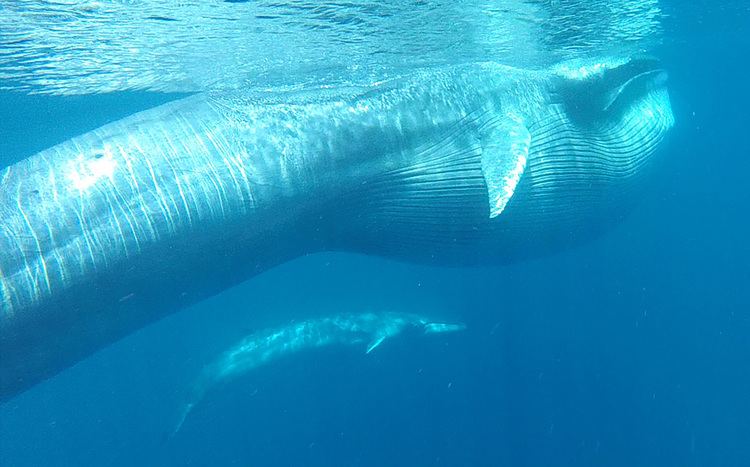
The identity of these eight specimens was finally resolved in 1998 when an unidentified whale, which had died after colliding with a fishing boat in the Sea of Japan and was towed to Tsunoshima, was examined by Dr. Tadasu Yamada, Chief of the Division of Mammals and Birds at the National Science Museum, Tokyo. This specimen closely resembled the individuals caught in the 1970s in external appearance and allowed a complete osteological examination of the putative new species to be conducted. As a result of external morphology, osteology, and mitochondrial DNA analysis of two of the harvested whales and the Tsunoshima specimen, Wada, Masayuki Oishi, and Yamada described Balaenoptera omurai in the 20 November 2003 issue of the journal Nature. In honor of the people of Tsunoshima, who helped remove the flesh from the type specimen, it was given the Japanese vernacular name of Tsunoshima kujira (English: Horn Island whale).
Holotype and paratypes

The holotype is an 11.03 m (36.2 ft) adult female, NSMT-M32505 (National Science Museum, Tokyo), which stranded at Tsunoshima (34°21′03″N 130°53′09″E) in the southern Sea of Japan on 11 September 1998. It includes a complete skeleton, both complete rows of baleen plates, and frozen pieces of muscle, blubber, and kidney collected by T. K. Yamada, M. Oishi, T. Kuramochi, E. Jibiki, and S. Fujioka. The type locality is the Sea of Japan – which may not be representative of the species’ typical range. The paratypes include the eight specimens (five females and three males), NRIFSF1-8 (National Research Institute of Far Seas Fisheries, Fisheries Research Agency, Shizuoka), collected by Japanese research vessels in the Indo-Pacific in the late 1970s. The longest baleen plate (NRIFSF6 includes 18 more baleen plates), an earplug, and a piece of the sixth thoracic vertebra with associated epiphysis were collected from each individual.
Osteology
Omura's whale has several unique skeletal features that distinguish it from its congeners, namely B. brydei and B. edeni. In B. omurai and B. brydei, the posterior end of the ascending process of the maxilla widens to become squarish, whereas in B. edeni, it is slender and round throughout its length. In B. omurai, this widened posterior portion conceals the premaxilla, which disappears below the maxilla and nasal and does not reach the frontal, whereas in both B. brydei and B. edeni, the premaxilla reaches the frontal. The parietals flare laterally in dorsal view in B. omurai and the Indo-Pacific form of B. brydei, but are invisible in dorsal view in B. edeni and the North Pacific form of B. brydei. B. omurai has two small foramina "along the suture between the parietal and squamosal in the posterior wall of the temporal fossa", which both B. brydei and B. edeni lack. B. omurai has an oblique ridge on the dorsal side of the maxilla near the base of the rostrum, which is absent in both B. brydei and B. edeni. Unlike B. edeni, the alisphenoid is separate from the squamosal in B. omurai. The head of the first rib is not bifurcated in B. omurai, unlike B. brydei and B. edeni.
Omura's whale has a total of 53 vertebrae, including seven cervical (the standard number among mammals), 13 thoracic, 12 lumbar, and 21 caudal. Like all members of its genus, it has only four digits on the manus of each pectoral fin (the third digit is missing). The phalangeal formula is: I-5, II-7, IV-6, V-3.
External appearance
Its appearance resembles the larger fin whale (thus the alternate common names of dwarf fin whale and little fin whale), both having the asymmetrical white, right mandible patch, a white blaze, a dark eye stripe, a white interstripe wash, and a white chevron. It also resembles the fin whale by having pectoral fins with a white anterior border and inner surface and flukes with a white ventral surface and black margins. It has a similar dorsal fin to Bryde's, being upright and falcate – in some individuals it may be extremely falcate. It usually has a more rounded tip than the latter species, which can appear very pointed and even ragged. Unlike Bryde's, however, they have a single prominent median ridge on the rostrum, whereas Bryde's typically have auxiliary ridges on either side. It is estimated to have 80 to 90 ventral grooves that extend past the umbilicus. The type specimen (NSMT-M32505) had 203-208 pairs of baleen plates that were "short and broad with uncurled, stiff, greyish-white fringes", while NRIFSF6 had an estimated 181-190 on the right side – fewer than any other species in its genus. Like the fin whale, NSMT-M32505 exhibited asymmetrical coloration in its baleen, as well: on the right side, the front third are yellowish-white, the intermediate 100 plates are bicolored (dark on the outer side and yellowish-white on the inner side), and the remaining plates in the back were all black, while on the left side, the majority are bicolored with the remaining back plates being all black like the right side. The average length and width for the nine specimens was 26 by 21.4 cm (10.2 by 8.4 in), the smallest length-to-breadth quotient (1.22) for any species in its genus.
Size
Omura's whale is among the smallest of the rorquals – only the two species of minke whale, the common and Antarctic, which reach 9.75 and 10.7 m (32.0 and 35.1 ft) in length, respectively, are smaller. Of the eight specimens taken during Japanese whaling in the Indo-Pacific, the five females ranged in length from 10.1 to 11.5 m (33.1 to 37.7 ft), while the three males ranged from 9.6 to 10.0 m (31.5 to 32.8 ft). The females ranged in age from perhaps only 9 years (the earplug was damaged or partially lost) for an 11.2 m (36.7 ft) individual to 29 years for the longest female, whereas the three males ranged from perhaps 21 years (another damaged or partially lost earplug) for the longest male to 38 years for one of the 9.6 m (31.5 ft) specimens. All were physically mature with the exception of the smallest female. Of individuals found stranded in Taiwan and Thailand between 1983 and 2004, five males ranged in length from 5.13 to 10 m (16.8 to 32.8 ft), while two females were 4.3 and 5.95 m (14.1 and 19.5 ft), respectively – a specimen of unknown sex that stranded in 1983 in Phuket Province, Thailand, was 7 m (23.0 ft) in length.
Of 16 "Bryde's whales" caught by hunters from Pamilacan between 1991 and 1993, 12 were measured. These cluster into two size categories, nine whales less than 10 m (32.8 ft), and three 12 m (39.4 ft) or more. Later, 85% (24 of 28) of the identified skull specimens examined from the Bohol Sea were found to be Omura's whales, whereas only 15% (4 of 28) were what was tentatively called the Indo-Pacific form of Bryde's whale (B. brydei). The former size category may be primarily (if not entirely) Omura's whale, whereas the larger whales – one of unknown sex of 12 m (39.4 ft) and two females of 13 m (42.7 ft) – would be the larger, offshore form of Bryde's whale. Of those smaller whales, four males ranged from 6.7 to 9.8 m (22.0 to 32.2 ft), four females ranged from 4.9 to 9.3 m (16.1 to 30.5 ft), and one of unknown sex was 9.4 m (30.8 ft).
The identify of three mature specimens (two females and a male) examined by biologist Graham Chittleborough in 1958 at a whaling station in Western Australia, which ranged in length from 10.6 to 11.74 m (34.8 to 38.5 ft), is uncertain – they may refer to Omura's whale or the smaller form of Bryde's whale (B. edeni). These three individuals were noted to have very small baleen plates – about 22 cm (8.8 in) by 15 cm (5.9 in), about 22 cm (8.8 in) by 16 cm (6.3 in), and 23.5 by 17.5 cm (9.3 by 6.9 in), respectively – with length-breadth quotients of 1.34 to 1.46, within the upper range (1.00-1.43) of the 9 specimens included in the formal description of Omura's whale, but also within the lower range of the Bryde's whale complex (1.2 to 1.33). The holotype of the smaller form of Bryde's whale (B. edeni) from Myanmar, though, had baleen plates of 30 by 15 cm (11.8 by 5.9 in), or a length-breadth quotient of exactly 2.0 – within the typical range of the Bryde's whale complex (1.8 to 2.4).
Mating
Of the three females caught in the Solomon Sea, two were ovulating and lactating and one was resting (not lactating, ovulating, or pregnant), while one of the two females caught near the Cocos Islands was accompanied by a calf estimated to be about 3 m (9.8 ft) in length. Nothing is known of the duration of gestation, lactation, or the timing or extent of breeding seasons – a 3.2 m (10 ft) female neonate with fetal folds and folded dorsal fin and flukes did strand at Miyazaki, Miyazaki Prefecture, on the eastern coast of Kyushu, in August 2005.
Behavior and diet
Omura's whales in the Komodo National Park have been observed repeatedly lunge feeding, defecating, breaching, and rolling at the surface in apparent mating (the last of which allowed the identification of a male). The diet is not known. The stomach contents of six of the paratypes appear to have been examined, but they were not differentiated from the Bryde's whales caught during the same expedition. Only euphausiids were reported. Studies on individuals off northwest Madagascar also reported lunge feeding. It is suggested that Omura's whales prefer shallower and warmer waters, unusual outside of Omura's whale and species closely related to it.
Range
Omura's whale appears to be restricted to the shelf and deep waters of tropical and subtropical regions, with records from the eastern Indian Ocean (off Cocos Islands, Thailand, and Malaysia), Borneo and Indonesia, the Philippines, Hong Kong, China, Taiwan, the Sea of Japan, the Seto Inland Sea, the Timor Sea, New Caledonia, Western and South Australia, the Solomon Sea, Madagascar, the Strait of Hormuz, and in the Atlantic ocean from Mauritania and Brazil.
Sightings
In 1999 and 2000, an unidentified species of rorqual was repeatedly seen in the waters of Komodo National Park. They were small (most estimated to be only 7 to 10 m (23 to 33 ft) in length) with asymmetrical coloration similar to the fin whale, only had a single prominent ridge on the rostrum, and an extremely hooked dorsal fin. At first, they were tentatively identified as a "pygmy or regionally distinct" form of Bryde's whale, which was confirmed when one was photographed and biopsied in October 2000 and its tissue sample sent to the Southwest Fisheries Science Center in La Jolla, California. There, its DNA was analyzed and found to be a complete match with a "pygmy Bryde's" sample obtained from the Philippines – later, however, it was discovered samples from the Philippines corresponded to B. omurai and not B. edeni.
On 26 September 2000, an unidentified balaenopterid was sighted off Rarotonga. It was said to move "through the water like a sei whale, the size resembled a minke whale, the head looked like a blue whale, and the chevron resembled a fin whale". Later, it was suggested to possibly be an Omura's whale, but it lacks the asymmetrical coloration and upright, very hooked dorsal fin typical of species.
During marine mammal surveys conducted in the Solomon Islands in 2009 and 2010, what were "most likely" Omura's whales were sighted on three occasions. They were estimated to be 6 to 10 m (20 to 33 ft) in length and lacked obvious auxiliary ridges. The sightings were made very close to shore (within a few hundred meters), one on the west coast of Malaita in November 2009, one on the northwest coast of Guadalcanal in November 2010, and a pair observed feeding within the Sandfly Passage of the Florida Islands on 14 November 2010.
In May 2008, a pair of possible Omura's whales likely to be of cow - calf, was observed during a birding tour off north of Three Kings Islands, northern New Zealand.
The species may have been sighted off the northwest coast of Australia on three separate occasions in 2009 and 2010. On November 2, 2009, a birder claimed to have seen three individuals – which he estimated to be 15 to 20 m (49 to 66 ft) in length, much longer than the longest reported – northwest of the Bonaparte Archipelago, Western Australia at 13°34′54″S 122°52′15″E; the same day another sighting was made of an estimated 15 m (49 ft) individual north of the Lacepede Islands, Western Australia. In October 2010, a group of birders on a trip from Darwin, Australia, to Ashmore Reef in the Timor Sea, encountered and photographed four groups of about 15 individuals ranging in length from an estimated 10 to 14 m (33 to 46 ft), seeing groups of three or four animals together, as well as at least two cow-calf pairs. A smaller-sized rorqual showing coloration resembling either a fin whale or Omura's whale was sighted off the Gulf of Carpentaria between Cape York and the Scott and Seringapatam Reefs during cetacean research expeditions in 2013.
In October 2015, an international team of scientists, led by Salvatore Cerchio of the New England Aquarium and Woods Hole Oceanographic Institution, released the first images and field observations of the species from a population off northwest Madagascar. Repeated sightings in that same area suggested that this is a resident group.
Artisanal whaling
As early as the late 19th century, the natives of Lila, Bohol, began hunting whales in the Bohol Sea. By the turn of the century, this had spread to nearby Pamilacan Island and later to Sagay, Camiguin. At Pamilacan, whales were caught as early as January and as late as June, but most were taken in April and May. When a whale was spotted from shore, between 10 and 20 pump boats (boats with motors originally used for pumps) were launched in chase. When within range, a "hookman" jumped atop the whale's head and stabbed it with a 35-cm-long, 22.5-cm-wide stainless steel hook attached to a heavy line of 30 m (98 ft) with a 2 m (6.6 ft) bamboo spar buoy at the end of it – at Camiguin, they harpooned it with a toggle-headed grommet harpoon with a 2.5 m (8.2 ft) wooden shaft similar to the "dolphin irons" used by American whalemen in the mid-19th century, which in turn was either attached to a 140 m (460 ft) rope with a plastic fishing float or a 400 m (1,300 ft) rope with a plastic float or oil drum at the end. After an hour or more, the whale tired, and men took turns cutting it until it died. The boats usually towed the carcass to Lila for butchering, where it was sold and the meat eaten raw or cooked. Pamilacan hunters alone caught 10 to 20 per year, whereas at Camiguin, they caught them only sporadically.
When Maria Louella L. Dolar and colleagues (1994) examined photographs or baleen of the whales caught in the Bohol Sea between 1991 and 1993, they identified them as Bryde's whales; this was supported by osteological examinations of skulls collected from the same sites by Dolar, William F. Perrin, and others (1996), who suggested they were a "small form" of Bryde's whale. The specimens were deposited in the collections of the Marine Research Laboratory of Silliman University in Dumaguete, Negros Oriental, Philippines, where they were examined by T. K. Yamada and co-workers (2008). They discovered that 24 of the skulls were actually from Omura's whales, whereas only four were from the Indo-Pacific Bryde's whale (B. brydei). This was supported by genetic studies, which found that, based on comparison of published phylogenies, the small "Bryde's whales" from the Philippines correspond to Omura's whale.
Scientific whaling
Of the eight individuals taken by Japanese "scientific whaling" in the 1970s, six were processed aboard the factory ship Tonan Maru No. 2 in the Solomon Sea (9°49'-10°17'S, 157°29'-157°56'E) on 24 October 1976, and two were processed aboard the factory ship Nissin Maru No. 3 near the Cocos Islands (10°51′S 97°02′E and 10°53′S 94°29′E, respectively) on 15 and 17 November 1978.
Bycatch
Two individuals, a 9.2 m (30 ft) male at Atami, Shizuoka Prefecture, in October 2003, and a 10.05 m (33.0 ft) female at Futtsu, Chiba Prefecture, in May 2004, were caught in set nets in Japan.
Conservation
Omura's whale is listed on Appendix II of the Convention on the Conservation of Migratory Species of Wild Animals. It is listed on Appendix II as it has an unfavorable conservation status or would benefit significantly from international co-operation organized by tailored agreements.
In addition, Omura's whale is covered by the Memorandum of Understanding for the Conservation of Cetaceans and Their Habitats in the Pacific Islands Region (Pacific Cetaceans MOU).
